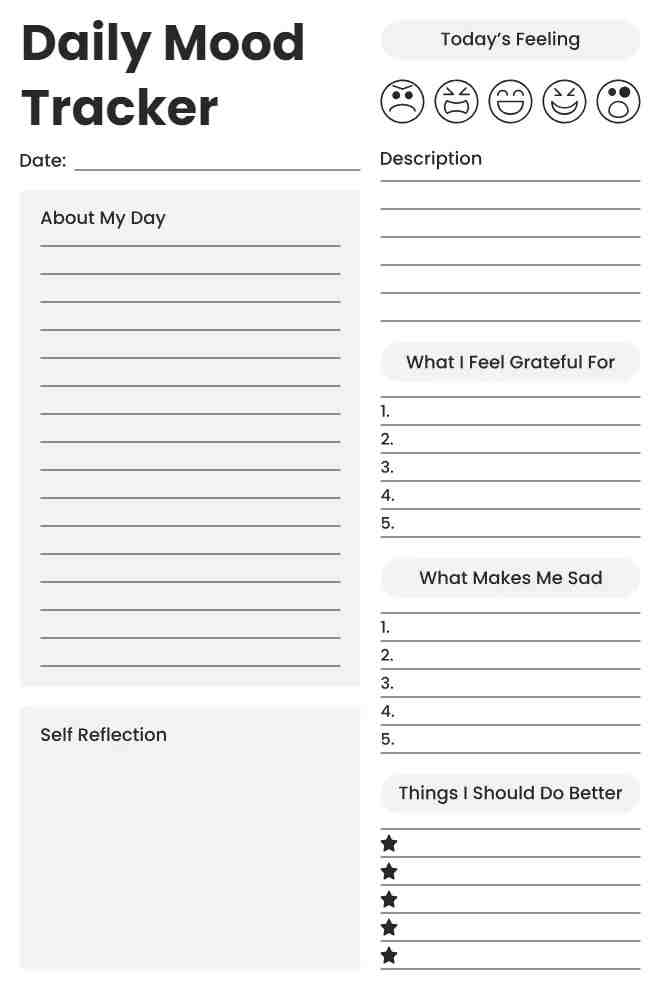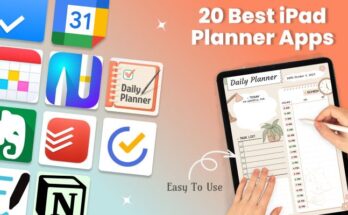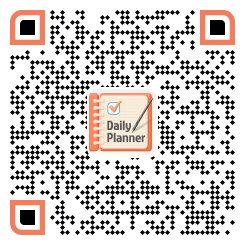If you’re looking for a simple way to reflect on your emotions and recognize patterns in your mood, a thoughtfully designed mood tracker template can help. Whether you’re tracking daily feelings or trying to understand emotional triggers, this daily mood tracker template provides a structured space to support mental clarity and self-awareness.
Use a daily planner app to easily track your mood alongside daily tasks. It helps link emotions to activities, boosting self-awareness and well-being.
With its simple and neat design, the clean daily mood tracker template makes it easy to track moods and reflect on feelings. Soft colors and clear fonts create a calming space, while the self-reflection section helps users gain emotional awareness and maintain a balanced mindset. This structured approach encourages consistency, making mood tracking a seamless part of daily life.
Why Are Monochrome Colors Effective in a Clean Daily Mood Tracker Template?
A monochrome color scheme enhances readability, creates a professional look, and supports emotional well-being. It simplifies the design while maintaining a visually appealing structure. This approach allows users to focus on mood tracking without distractions, making it an effective choice for a simple daily mood tracker template.
Enhances Readability and Focus
A monochrome color scheme consists of different shades of a single color, ensuring a harmonious and distraction-free design. This simplicity improves readability, making it easier for users to focus on their daily mood entries. Unlike vibrant or contrasting colors, monochrome tones reduce visual fatigue, allowing for a calm and effortless tracking experience.
Creates a Clean and Minimalist Look
The power of monochrome lies in its ability to create a modern, sleek, and professional aesthetic. A well-structured daily mood tracker template with a monochrome palette eliminates unnecessary visual clutter, keeping the design sophisticated and easy to navigate. The minimalist design enhances user focus on mood tracking and reflection. It eliminates distractions, making self-assessment more effective.
Supports Emotional Balance
Colors have a profound psychological impact on emotions and mood perception. A monochrome design, particularly in neutral, soft, or pastel shades, helps evoke a sense of calm and relaxation. Darker tones can provide a feeling of stability, while lighter tones offer a refreshing and uplifting experience. A consistent monochrome mood tracker creates a peaceful space for self-expression.
Encourages Customization
While monochrome color schemes maintain simplicity, they also allow for creative flexibility. Users can personalize their daily mood tracker template by adding small yet effective color highlights to specific sections, such as mood categories, gratitude lists, or self-reflection notes. This method keeps the overall aesthetic clean while still allowing individuals to customize their tracking experience.
How Can “Today’s Feeling” Emoticons Simplify Daily Emotional Check-Ins?
The “Today’s Feeling” section in the Daily Mood Tracker features five emoticons, ranging from sad to ecstatic, allowing for quick and easy mood logging. This visual method simplifies tracking emotions, especially on busy days, by letting you select how you feel in just seconds.
Using emoticons reduces the effort of journaling and helps identify emotional patterns over time. For example, you might notice a frequent “neutral” mood on Mondays, encouraging reflection on why the week starts that way.
Tips for Using the Emoticons Effectively:
- Take a moment to pause and reflect before choosing an emoticon—don’t rush the process.
- If you’re feeling mixed emotions, pick the emoticon that represents your dominant mood, and use the “About My Day” section to elaborate.
- Review your emoticon choices weekly to identify trends, such as recurring low moods on certain days.
Example: Imagine you had a stressful day at work but felt uplifted after a call with a friend. You might select the “happy” emoticon to reflect your overall mood by the end of the day. Over time, you notice you often pick the “sad” face on days with tight deadlines, which could prompt you to plan better workload distribution.
This simple emoticon system makes the Daily Mood Tracker a powerful tool for anyone looking to start their emotional wellness journey without feeling overwhelmed. It’s a small step that can lead to significant insights over time.
How Does Grid Alignment Make a Clean Daily Mood Tracker Template Neat?
A well-aligned grid structure ensures clarity, consistency, and ease of use. It effectively organizes information, making it easier for users to track their emotions and reflections. Proper alignment reduces clutter and enhances readability, ensuring that the daily wellness planner template for tracking moods and meals provides a structured and visually balanced layout for better self-awareness and organization.
- Improves Organization and Flow: Grid alignment structures the template into well-defined sections, making it easier for users to input their data systematically. This organized flow prevents overlapping information and enhances readability.
- Creates a Professional and Balanced Layout: When elements are aligned properly, the design looks polished and visually appealing. A structured grid ensures consistency, making it easy to navigate the template without confusion.
- Enhances Writing Space Efficiency: A well-aligned grid layout maximizes space, ensuring that each section has ample room for notes, reflections, and mood indicators. It helps users stay engaged and encourages consistent tracking habits.
- Increases User Comfort: A misaligned layout can feel cluttered and difficult to use. A structured daily mood tracker template provides a comfortable experience, making it easier to focus on journaling and emotional tracking.
What Insights Can You Gain from Tracking Gratitude and Sadness Daily?
The “What I Feel Grateful For” and “What Makes Me Sad” sections help you reflect on your day’s highs and lows. Listing up to five items in each creates a balanced view of your emotions. This practice reveals patterns and triggers, fostering emotional clarity. It encourages gratitude while also highlighting areas that may need attention.
Tracking gratitude can enhance mental well-being by shifting focus to positive moments, even on hard days. Simple notes like “a warm cup of coffee” can lift your mood and build resilience. Noting what makes you sad, such as a missed deadline, helps process emotions and reduce stress, promoting emotional clarity. To deepen your gratitude practice, try our gratitude journal template to explore more ways to cultivate positivity daily.
Key Insights You Might Discover:
- Gratitude patterns: You may realize that time with loved ones consistently lifts your spirits, encouraging you to prioritize those moments.
- Sadness triggers: You might notice that a lack of sleep often leads to low moods, prompting you to adjust your bedtime routine. If sleep issues are a recurring trigger, consider using a sleep journal template to track and improve your rest patterns.
- Emotional balance: Comparing the two sections can help you see if your day was overwhelmingly negative or if there were silver linings you overlooked.
Example: On a particularly hectic day, you might write in the gratitude section: “1. A supportive text from my sister, 2. A sunny walk during lunch, 3. Finishing a big project.” In the sadness section, you note: “1. Feeling overwhelmed by emails, 2. Skipping the gym.” Reviewing this, you might decide to set boundaries around email time and reschedule your workout for the next day.
By consistently filling out these sections, you’ll gain a clearer picture of what drives your emotional state, empowering you to make small, impactful changes to your daily routine.
What’s the Role of the Self-Reflection Section in a Clean Daily Mood Tracker Template?
The self-reflection section allows users to analyze their emotions, track behavioral patterns, and develop emotional intelligence. It provides a space for mindful thinking, promoting self-awareness and growth. Incorporating planner organization ideas for mood tracking and self-care can further enhance the structure, making a simple daily mood tracker template more effective for mental well-being and self-improvement.
- Encourages Deeper Emotions: The self-reflection section helps users analyze their thoughts and emotions beyond just marking a mood. Writing about feelings promotes self-awareness and emotional clarity.
- Helps Identify Mood Patterns: By reflecting on daily experiences, users can recognize trends in their moods over time. This insight allows them to pinpoint triggers and patterns, leading to healthier emotional management.
- Promotes Mindful Thinking: Writing down thoughts encourages mindfulness and reduces stress. Using a daily planner to boost mental health and mindfulness enhances self-awareness and emotional balance.
- Supports Personal Growth: A daily mood tracker template with a self-reflection section enables users to track progress in emotional development. Over time, they can see improvements in their thoughts, reactions, and overall mindset.
How Does Identifying “Things I Should Do Better” Drive Daily Improvement?
The “Things I Should Do Better” section, marked with star bullet points, encourages you to reflect on areas where you can improve each day. This proactive approach turns self-reflection into action, helping you focus on personal growth without feeling overwhelmed. By identifying up to five things daily, you create a roadmap for incremental progress, which can lead to lasting change over time. To organize your tasks and avoid procrastination, you can pair this section with our daily schedule planner template to structure your day more effectively.
This section is powerful because it connects emotional awareness with practical action. For instance, if procrastination made you feel down, noting “Start tasks earlier” as a solution creates a clear path for improvement. This link encourages self-growth and a sense of control.
Steps to Use This Section for Growth:
- Be specific: Instead of writing “Be more productive,” try “Spend 30 minutes on my project before lunch.”
- Focus on small, achievable changes: Small wins build momentum, like “Drink a glass of water first thing in the morning.”
- Review weekly: Look back at your entries to see if you’ve made progress on recurring items, and adjust your approach if needed.
Example: Let’s say you felt rushed all day and missed a deadline. In this section, you might write: “★ Plan my day the night before, ★ Set a timer for focused work, ★ Say no to non-urgent requests.” The next day, you implement these changes and notice you feel more organized and less stressed.
By making this a daily habit, you’ll not only address immediate challenges but also build a mindset geared toward continuous improvement, aligning your actions with your long-term goals.
Why Is a Dedicated “Self Reflection” Space Essential for Mindfulness?
The “Self Reflection” section offers open space for freeform journaling, helping you process emotions and thoughts more deeply. It supports mindfulness by encouraging presence and awareness, which can reduce stress and boost emotional resilience.
Writing in the “Self Reflection” space helps you slow down and understand the reasons behind your emotions. Whether you’re feeling sad or joyful, this section encourages you to explore the causes, recognize emotional patterns, and build self-awareness. To further enhance your mindfulness practice, consider using our mindfulness journal templates for additional prompts and exercises.
Ways to Use the Self-Reflection Section:
- Ask yourself guiding questions: “What was the best part of my day?” or “What could I have handled differently?”
- Explore emotions tied to your “What Makes Me Sad” entries: If you wrote “an argument with a friend,” reflect on how it made you feel and what you’d like to do next.
- Write affirmations or lessons learned: For instance, “I’m proud of how I stayed calm during a tough meeting.”
Example: After a busy day, you might write: “I felt overwhelmed today because I didn’t plan my tasks well. The highlight was having lunch with a coworker—it reminded me how much I value those connections. Tomorrow, I’ll try to set clearer priorities and take breaks to recharge.” This reflection helps you process the day and set intentions for the next.
This dedicated space ensures that your mood tracking goes beyond surface-level observations, helping you build a deeper understanding of yourself and your emotional patterns. Over time, this habit can lead to a more mindful, intentional approach to daily life.
Conclusion
A clean daily mood tracker template with a self-reflection section is essential for emotional awareness and personal growth. Its minimalist design, structured layout, and mindful journaling space make it easy to use while encouraging self-improvement. By tracking moods and reflecting with the PlanWiz planner app, users can develop a healthier and more balanced mindset.
FAQs
A daily mood tracker template is a tool to log your emotions each day. It includes sections like emoticons, gratitude, and reflection spaces. You fill it out to track and understand your moods
Daily use helps you spot emotional patterns, manage triggers, and reduce stress. It fosters mindfulness and self-awareness, supporting mental well-being and personal growth through consistent reflection.
Start simple: mark your mood with emoticons and note a few gratitude or sadness points. Spend 5 minutes daily, focusing on key sections, and gradually add more details as you get comfortable.
Review your entries weekly or monthly. Look for recurring moods, like sadness on specific days, or patterns in gratitude and sadness, revealing triggers or habits affecting your emotions.
Yes, it supports growth by linking emotional insights to action. Sections like “Things I Should Do Better” help set daily goals, encouraging small, consistent improvements toward larger objectives.







